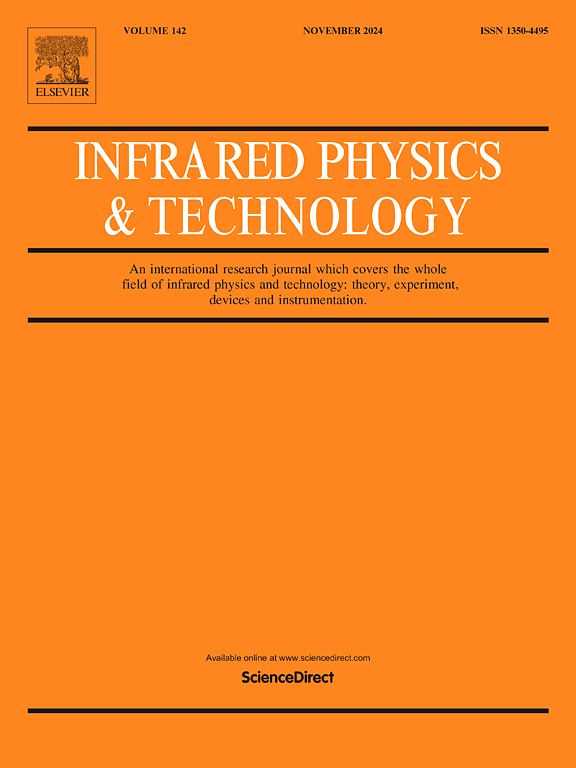An Wavelet Steered network for efficient infrared small target detection
IF 3.1
3区 物理与天体物理
Q2 INSTRUMENTS & INSTRUMENTATION
引用次数: 0
Abstract
This paper introduces an innovative approach for infrared small target detection (IRSTD). Our model is primarily motivated by the integration of Discrete Wavelet Transform (DWT) into a convolutional neural network (CNN), combining the classical multi-scale analysis method with the deep learning (DL) framework. Firstly, it is argued that detail loss may be induced by downsampling operations such as average or maximize pooling, and the interpolation of upsampling is inefficient in increasing useful information. Therefore, Haar DWT and inverse DWT (IDWT) are embedded for lossless downsampling and upsampling, facilitating more effective feature extraction within the CNN. Secondly, a hybrid attention mechanism, referred to as Wavelet Steered Transformer (WST), is designed to fully enhance the DWT features both spatially and across channels. This mechanism consists of two key improvements: (1) Channel-wise Transformer: We propose adapting a channel-wise Transformer to enhance semantic information and suppress background clutter and noise. This enhancement ensures that the targets and background features are distributed across different channels, thereby boosting detection performance. (2) Dilated-Gate Convolutional Module: A dilated-gate convolutional module is employed to enhance spatial location accuracy. Unlike previous methods for location extraction, this module uses a combination of different kernel sizes and dilation rates to improve spatial accuracy. Experimental results on benchmark datasets showcase the supervisor performance of the proposed method. The code and data for this paper will be released at https://github.com/Fortuneteller6/WaveTD once the paper is accepted.
小波导向网络用于红外小目标的高效检测
介绍了一种红外小目标检测的新方法。我们的模型主要是将离散小波变换(DWT)集成到卷积神经网络(CNN)中,将经典的多尺度分析方法与深度学习(DL)框架相结合。首先,本文认为平均池化或最大化池化等下采样操作可能导致细节损失,而上采样插值在增加有用信息方面效率低下。因此,嵌入Haar DWT和逆DWT (IDWT)进行无损下采样和上采样,便于在CNN内更有效地提取特征。其次,设计了一种混合注意机制,即小波导向变压器(WST),以充分增强小波变换的空间和跨信道特性。该机制包括两个关键改进:(1)信道转换器:我们建议采用信道转换器来增强语义信息并抑制背景杂波和噪声。这种增强确保了目标和背景特征分布在不同的通道上,从而提高了检测性能。(2)扩展门卷积模块:采用扩展门卷积模块提高空间定位精度。与以前的位置提取方法不同,该模块使用不同核大小和膨胀率的组合来提高空间精度。在基准数据集上的实验结果表明了该方法的性能。论文一经录用,代码和数据将在https://github.com/Fortuneteller6/WaveTD上发布。
本文章由计算机程序翻译,如有差异,请以英文原文为准。
求助全文
约1分钟内获得全文
求助全文
来源期刊
CiteScore
5.70
自引率
12.10%
发文量
400
审稿时长
67 days
期刊介绍:
The Journal covers the entire field of infrared physics and technology: theory, experiment, application, devices and instrumentation. Infrared'' is defined as covering the near, mid and far infrared (terahertz) regions from 0.75um (750nm) to 1mm (300GHz.) Submissions in the 300GHz to 100GHz region may be accepted at the editors discretion if their content is relevant to shorter wavelengths. Submissions must be primarily concerned with and directly relevant to this spectral region.
Its core topics can be summarized as the generation, propagation and detection, of infrared radiation; the associated optics, materials and devices; and its use in all fields of science, industry, engineering and medicine.
Infrared techniques occur in many different fields, notably spectroscopy and interferometry; material characterization and processing; atmospheric physics, astronomy and space research. Scientific aspects include lasers, quantum optics, quantum electronics, image processing and semiconductor physics. Some important applications are medical diagnostics and treatment, industrial inspection and environmental monitoring.

 求助内容:
求助内容: 应助结果提醒方式:
应助结果提醒方式:


